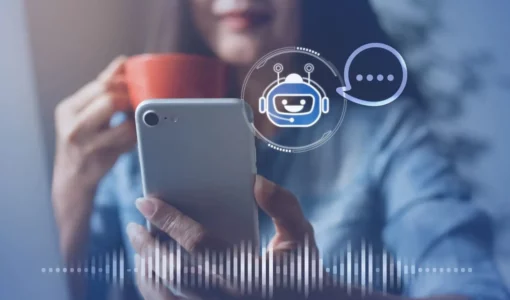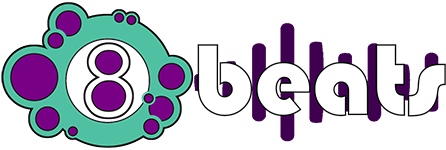A famous example is the Markov Logic Network (MLN) (by Richardson and Domingos), which combines first-order logic with probabilistic graphical models. A related approach is used, for example, used in OpenCog, which is a software platform for AI and AGI. In fact, I think it is widely believed that inductive and deductive reasoning are both necessary for an AGI. The AGI needs inductive metadialog.com reasoning for situations that involve uncertainty (most cases) and deductive reasoning for the remaining cases (e.g. doing math, i.e. we expect an AGI to be able to prove theorems, as we do). Defining the knowledge base requires skills in the real world, and the result is often a complex and deeply nested set of logical expressions connected via several logical connectives.
- In particular, a human observer would not be able to readily recognize what is being represented.
- This is the key reason why coming up with software which can interpret language the right way and in a reliable way, has become very crucial to developing any kind of AI across the board.
- The AGI needs inductive reasoning for situations that involve uncertainty (most cases) and deductive reasoning for the remaining cases (e.g. doing math, i.e. we expect an AGI to be able to prove theorems, as we do).
- In our minds, we possess the necessary knowledge to understand the syntactic structure of the individual symbols and their semantics (i.e., how the different symbols combine and interact with each other).
- The scope of artificial intelligence extends from our daily lives with recommendation services, smart social media feeds, and built routes in maps, to futuristic concepts, humanoid robots, and discussions about its dangers.
- Irrespective of our demographic and sociographic differences, we can immediately recognize Apple’s famous bitten apple logo or Ferrari’s prancing black horse.
This school of thought would dominate the field for the next thirty years. Cory is a lead research scientist at Bosch Research and Technology Center with a focus on applying knowledge representation and semantic technology to enable autonomous driving. Prior to joining Bosch, he earned a PhD in Computer Science from WSU, where he worked at the Kno.e.sis Center applying semantic technologies to represent and manage sensor data on the Web.
Most Popular 4soft Articles on ICO & Blockchain Development
In addition, it is worth getting acquainted with their structure, nomenclature, and relations that bind all these terms together. More and more often, Ladies and Gentlemen, in your daily press releases, news websites, industry reviews, and market analyzes, you can find terms such as artificial intelligence (AI). Machine learning (ML), deep learning (DL), data research, data mining, and big data are all around them too. Thus “messy” problems such as image recognition are ideally handled by neural networks — subsymbolic AI.
- Metadata are a form of formally represented background knowledge, for example a knowledge base, a knowledge graph or other structured background knowledge, that adds further information or context to the data or system.
- For almost any type of programming outside of statistical learning algorithms, symbolic processing is used; consequently, it is in some way a necessary part of every AI system.
- This article helps you to understand everything regarding Neuro Symbolic AI.
- When companies are able to achieve this level of computational genius, they would literally be in a position to open the AI development floodgates – by letting it access and consume practically any kind of knowledge they throw at it.
- Arguably, interest in the technique predates even Rosenblatt’s work, with researchers in the 1940s constructing “neurons” with electrical circuits.
- As for the previous categorizations, decisions how to classify each paper were often not clear-cut.
Deep learning fails to extract compositional and causal structures from data, even though it excels in large-scale pattern recognition. While symbolic models aim for complicated connections, they are good at capturing compositional and causal structures. Constraint solvers perform a more limited kind of inference than first-order logic.
What we learned from the deep learning revolution
Combining learning with rules-based logic is also expected to help data scientists and machine learning engineers train algorithms with less data by using neural networks to create the knowledge base that an expert system and symbolic AI requires. Contemporary deep learning models are limited in their ability to interpret while the requirement of huge amounts of data for learning goes on increasing. Due to these limitations, researchers are trying to look for new avenues by uniting symbolic artificial intelligence techniques and neural networks. Parsing, tokenizing, spelling correction, part-of-speech tagging, noun and verb phrase chunking are all aspects of natural language processing long handled by symbolic AI, but since improved by deep learning approaches. In symbolic AI, discourse representation theory and first-order logic have been used to represent sentence meanings. Latent semantic analysis (LSA) and explicit semantic analysis also provided vector representations of documents.
Language is a type of data that relies on statistical pattern matching at the lowest levels but quickly requires logical reasoning at higher levels. Pushing performance for NLP systems will likely be akin to augmenting deep neural networks with logical reasoning capabilities. The Life Sciences are a hub domain for big data generation and complex knowledge representation. Life Sciences have long been one of the key drivers behind progress in AI, and the vastly increasing volume and complexity of data in biology is one of the drivers in Data Science as well. Life Sciences are also a prime application area for novel machine learning methods [2,51]. Similarly, Semantic Web technologies such as knowledge graphs and ontologies are widely applied to represent, interpret and integrate data [12,32,61].
What is Symbolic AI?
“This is a prime reason why language is not wholly solved by current deep learning systems,” Seddiqi said. The two big arrows symbolize the integration, retro-donation, communication needed between Data Science and methods to process knowledge from symbolic AI that enable the flow of information in both directions. A neuro-symbolic system, therefore, applies logic and language processing to answer the question in a similar way to how a human would reason. An example of such a computer program is the neuro-symbolic concept learner (NS-CL), created at the MIT-IBM lab by a team led by Josh Tenenbaum, a professor at MIT’s Center for Brains, Minds, and Machines. It’s really important to think about how to get enough data before starting to work on a DML (ML) task or project. The collection of data can take more time and resources than rating DML (ML) networks and building data pipelines.
- They can also be used to describe other symbols (a cat with fluffy ears, a red carpet, etc.).
- Then, we must express this knowledge as logical propositions to build our knowledge base.
- They are particularly good at tasks such as image recognition, natural language processing etc.
- A lot of work on the topic is also not explicitly placed as NeSy AI research, as the term itself only begun to be used more systematically since the 1990, and only very recently – as we will see below – has seen an increase in the context of major AI conferences.
- If we open the outputs/engine.log file we can see the dumped traces with all the prompts and results.
- They are the building blocks of our API and are used to define the behavior of our symbols.
Most of the math and stats for these techniques are several decades old and well understood. Neuro Symbolic AI not only combines highly-acclaimed AI and machine learning approaches, but it also manages to bypass the majority of weak points and disadvantages that come with using each system separately. To test the capabilities of image-recognition programs, ImageNet hosted an annual competition in which different teams vied to produce the most accurate model. In 2010, the best-performing program had a 72% accuracy rate; in 2011, it crept forward to 75%. Overall, each type of Neuro-Symbolic AI has its own strengths and weaknesses, and researchers continue to explore new approaches and combinations to create more powerful and versatile AI systems.
Symbolic AI today
The theory of human mind-level AI is not about replication or simulation. Symbolic AI, also known as good old-fashioned AI (GOFAI), has been the dominant area of research throughout much of AI history. Symbolic AI requires developers to carefully define the rules that control the behavior of an intelligent system. As a result, symbolic AI lends itself to applications where the environment is predictable and the rules are clear.
Basics Of Artificial Intelligence: AI 101 – Dataconomy
Basics Of Artificial Intelligence: AI 101.
Posted: Tue, 18 Apr 2023 07:00:00 GMT [source]
Funnily enough, attendees largely ignored it at the time – both because of Newell and Simon’s purported arrogance and their tendency to focus on the psychological ramifications their innovation suggested, rather than its technological importance. To understand how we have reached this juncture and where AI may take us in the coming years, we need to unroll our present and look at the past. In today’s piece, we’ll seek to understand the history of AI through seven experiments. In doing so, we’ll discuss the innovations and failures, false starts and breakthroughs that have defined this wild effort to create discarnate intelligence.
The Neuro-Symbolic Concept Learner: Interpreting Scenes Words and Sentences from Natural Supervision
Before we here at Computools start developing a neural network for a client’s needs, we build a separate project for data collecting and processing (by a human operator). Perhaps one of the greatest benefits of using neuro-symbolic programming is, that we can get a clear understanding of how well our LLMs understand simple operations. Specifically we gain knowledge about if, and at which point they fail, enabling us to follow their StackTraces and determine the failure points.

Similarly, automation email management systems are not quite capable of penetrating meaning beyond just product names and other points of information or references. In the end, users are tasked with sorting through a long list of ‘hits’, trying to locate the primary pieces of knowledge. This inevitably slows down business processes, sets the clock back on swift decision-making, and ultimately, has an adverse impact on productivity and revenue. Decades of AI and NLP knowhow – Collectively, our team leverages decades of experience around AI, natural language processing and knowledge graph development. The average business user and enterprises alike can benefit massively from this experience for their customised hybrid AI solution. Bringing together the best of hybrid AI and machine learning (ML) models is the best way to unlock the full value of unstructured language data – and that too in a speedy, accurate and scalable way which most businesses demand today.
The benefits and limits of symbolic AI
Cyc has attempted to capture useful common-sense knowledge and has “micro-theories” to handle particular kinds of domain-specific reasoning. Early work covered both applications of formal reasoning emphasizing first-order logic, along with attempts to handle common-sense reasoning in a less formal manner. Kautz presented these as “five ways to bring together the neural and symbolic traditions.” In the brief address, only a few examples were given of corresponding work. First Line Software is a premier provider of software engineering, software enablement, and digital transformation services.
A Symbolic AI system is said to be monotonic – once a piece of logic or rule is fed to the AI, it cannot be unlearned. Newly introduced rules are added to the existing knowledge, making Symbolic AI significantly lack adaptability and scalability. One power that the human mind has mastered over the years is adaptability. Humans can transfer knowledge from one domain to another, adjust our skills and methods with the times, and reason about and infer innovations.
The fall of Symbolic AI
The translation of the tax code into symbolic logic was a painstaking manual process. If a natural language model such as BERT can be adapted to reliably translate statute into to symbolic logic, a large amount of the repetitive work of tax lawyers could potentially be automated. Holzenberger’s team and others have been working on models to interpret legal texts in natural language to feed into a symbolic logic model. Nils Holzenberger at Johns Hopkins University has succeeded in translating a large amount of the US tax code (which is statute law rather than case law) into symbolic logic in Prolog (a programming language used for logical reasoning). This year, we can definitely expect AI to become far more efficient at solving practical problems which typically get in the way of unstructured language processes driven by data – thanks largely to advances in natural language processing (NLP).
What are the examples of embodied AI?
Examples of such projects include intelligent wearable robots for rehabilitation, empathic robots, light-based tactile fingers for robotic manipulation, computational cameras, robot-enabled remote manufacturing, and many more.
Symbolical linguistic representation is also the secret behind some intelligent voice assistants. These smart assistants leverage Symbolic AI to structure sentences by placing nouns, verbs, and other linguistic properties in their correct place to ensure proper grammatical syntax and semantic execution. The premise behind Symbolic AI is using symbols to solve a specific task. In Symbolic AI, we formalize everything we know about our problem as symbolic rules and feed it to the AI.

What is an example of a non symbolic AI?
Examples of Non-symbolic AI include genetic algorithms, neural networks and deep learning.
